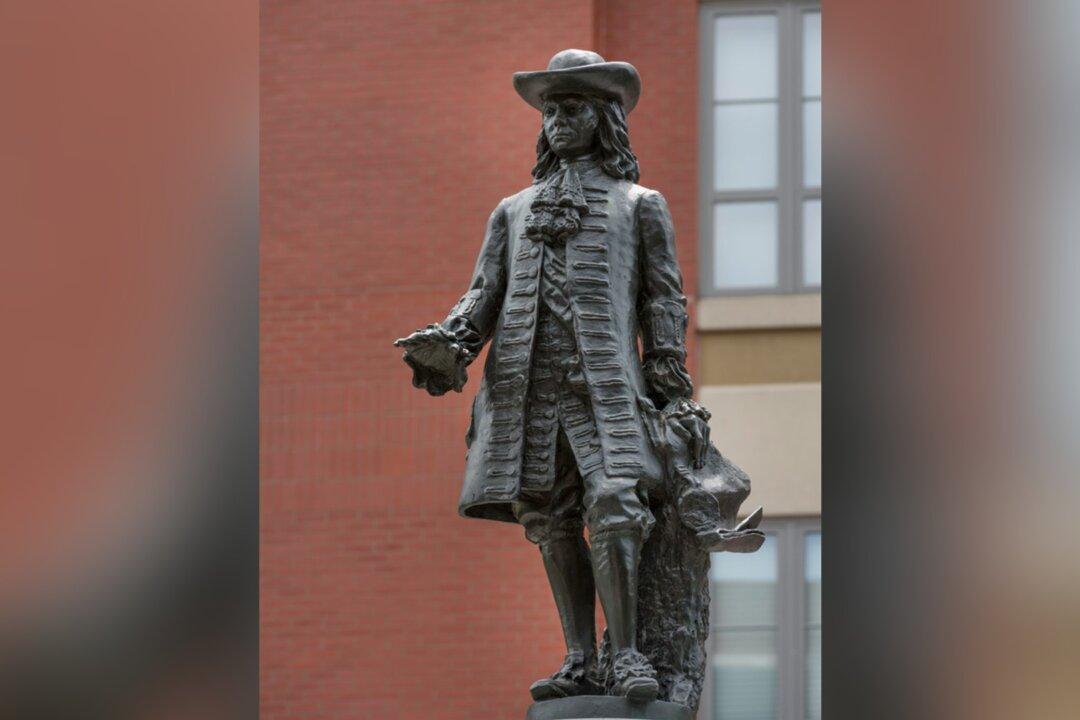Some of the most iconic symbols of early America can be found in Philadelphia’s Independence National Historical Park, including the Liberty Bell, and Independence Hall, where in 1776 the Second Continental Congress signed the Declaration of Independence. In the same room in 1787, delegates to the Constitutional Convention wrote the U.S. Constitution.
The National Park Service (NPS) plans to remove one of the park’s historic markers: a statue of Pennsylvania’s founder, William Penn, which has been in place for 42 years.





